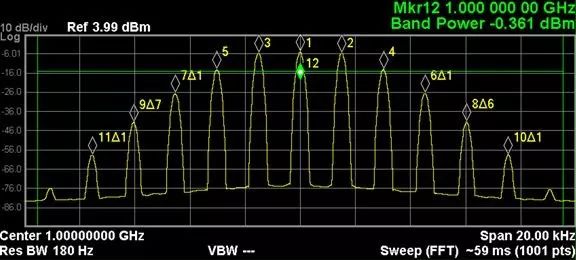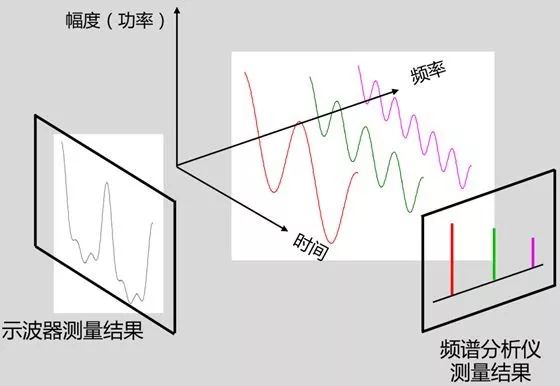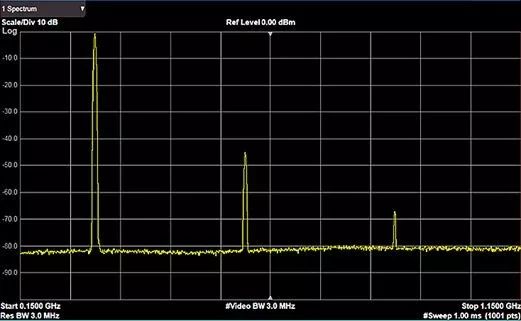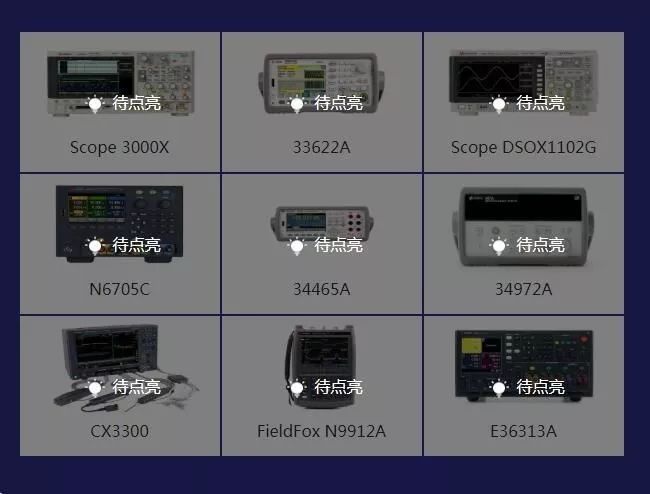Marker
Everyone who has used a spectrum analyzer knows the importance of Marker. Whether measuring frequency or measuring amplitude, we cannot do without this little Marker.

There are two common uses of Marker:
One Put the Marker on the trace of the spectrum analyzer to obtain the absolute frequency and amplitude of the signal. In order to obtain the best frequency accuracy, the Marker must be carefully placed at the peak of the spectral component response. If there is a slight deviation, the frequency reading will be inaccurate.
We can minimize their impact by narrowing the span and resolution bandwidth, making it easier to place the Marker at the peak.
2 Difference Marker. This is a relative test. We first determine a fixed Marker, and then create a second Marker. This marker is active and can be placed anywhere on the spectrum.
The displayed reading indicates the relative frequency interval and amplitude difference between the fixed marker and the active marker.
Based on the collected user feedback, we summarized the following common problems:
o What is the use of Marker table?
o Can Marker measure noise?
o Can the power of digital modulation signal be measured with Marker?
o What role does Marker play in EMI debugging?
Although Marker is simple, it is not easy to use it well. If you want to know the answers to these questions, just watch this little video below!
Harmonic measurement
Before talking about harmonic measurement, let's review this classic time-domain frequency-domain measurement comparison chart. This picture shows the waveform of a composite signal. Obviously, the graphic signal of the oscilloscope is not purely sinusoidal, and it is difficult to determine the reason only by observation.
According to the frequency domain measurement results, the signal spectrum consists of exactly three sine waves. Now we know why the original signal is not a pure sine wave, because it also contains two other sine components, in this case the second and third harmonics.

Usually harmonic measurement needs come from two aspects:
On the one hand, the design requires the use of harmonics. For example, the spectrum analyzer itself uses harmonic mixing technology.
Another requirement is EMI electromagnetic interference testing, where we measure harmonics as a distorted signal. Our concern is that excessive harmonic distortion at the output of the transmitter will interfere with systems in other frequency bands.
When measuring harmonic distortion, we use the fundamental wave of the signal as a reference, and the absolute value is not considered, but only the amplitude difference between the harmonic and the fundamental wave.
According to relevant regulations established by government agencies or industry standards, the 5th or 10th harmonics are required to be measured in EMI electromagnetic interference tests. As the order of harmonics increases, the amplitude of the harmonics becomes lower and lower, which brings a lot of trouble to the accurate measurement of high-order harmonics.

N9000B signal analyzer comes standard with harmonic measurement function, which can automatically search for the fundamental wave and complete the measurement of the highest 10th harmonic. For each harmonic frequency point, N9000B will automatically set the best test parameters for measurement.
Want to know how smart this harmonic measurement is? Just watch this little video to understand!
Have you got the above two tips?

The through-wall terminals can be installed side by side on panels with thicknesses ranging from 1mm to 10mm, and can automatically compensate and adjust the thickness of the panel to form a terminal block with any number of poles. In addition, isolation plates can be used to increase air gaps and creepage distances.
Through-Wall Terminal,Through Wall Terminal Block,Through-Wall Terminal Extender,Through-The-Wall Terminal Block
Sichuan Xinlian electronic science and technology Company , https://www.sztmlchs.com
